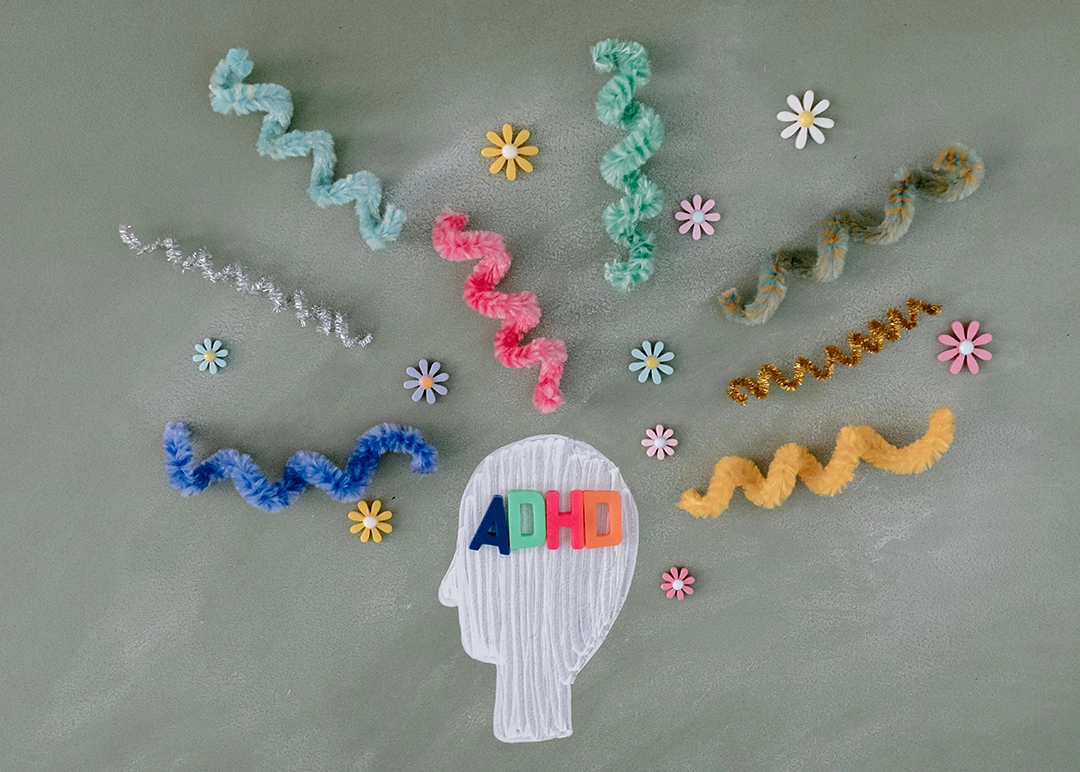As awareness and recognition of ADHD in adults continues to grow, the importance of accurate diagnosis and tailored treatment plans has become increasingly evident. And here at Silver Lake Psychology we value helping adults get the correct information and the right diagnosis.
What Does an ADHD Test Look Like for Adults?
Testing for ADHD in adults typically involves a comprehensive assessment conducted by a mental health professional, such as a psychiatrist, psychologist, or neurologist. The process may include the following steps:
- Clinical Interview: The clinician conducts a thorough interview to gather information about the individual’s developmental history, current symptoms, and any relevant family history. They may inquire about symptoms such as impulsivity, distractibility, difficulty sustaining attention, and hyperactivity.
- Symptom Assessment: The clinician may use standardized questionnaires or rating scales to assess the presence and severity of ADHD symptoms. These may include the Adult ADHD Self-Report Scale (ASRS) or the Conners’ Adult ADHD Rating Scales (CAARS).
- Medical History and Physical Examination: The clinician will review the individual’s medical history and conduct a physical examination to rule out other possible causes of the symptoms.
- Psychological Testing: In some cases, psychological tests may be administered to assess cognitive functioning, attention, and other relevant domains. These tests can help identify patterns of strengths and weaknesses that may be indicative of ADHD.
- Collateral Information: The clinician may gather information from other sources, such as family members, partners, or close friends, to gain additional insights into the individual’s behavior and functioning.
- Diagnostic Criteria: The assessment is conducted in accordance with the diagnostic criteria outlined in the Diagnostic and Statistical Manual of Mental Disorders (DSM-5). To receive a diagnosis of ADHD, the individual must meet the specified criteria for the disorder.
- Rule Out Other Conditions: It’s important to rule out other mental health conditions or medical issues that may mimic or co-occur with ADHD, such as anxiety disorders, depression, substance abuse, or sleep disorders.
- Follow-Up and Treatment Planning: Following the assessment, the clinician provides feedback to the individual and collaborates with them to develop a treatment plan. This may include medication, psychotherapy, lifestyle modifications, or a combination of approaches tailored to the individual’s needs.
Overall, the process of testing for ADHD in adults is multifaceted and aims to gather comprehensive information to inform an accurate diagnosis and appropriate treatment plan.

Overlooked Symptoms of ADHD in Adults
ADHD symptoms can manifest differently in adults compared to children, and some symptoms may be overlooked or misunderstood. Here are some commonly overlooked symptoms of ADHD in adults:
- Chronic Procrastination: Adults with ADHD may struggle with procrastination, difficulty initiating tasks, and poor time management skills. This can lead to missed deadlines, unfinished projects, and feelings of frustration and inadequacy.
- Impulsivity in Decision-Making: Impulsive decision-making can manifest in various areas of life, including financial decisions, career choices, and interpersonal relationships. Adults with ADHD may struggle to consider long-term consequences and may act impulsively without fully thinking through their choices.
- Emotional Dysregulation: Adults with ADHD may experience intense emotions and difficulty regulating their mood. They may have a quick temper, mood swings, and difficulty coping with stress. Emotional dysregulation can impact relationships and overall well-being.
- Forgetfulness and Disorganization: Forgetfulness and disorganization are common symptoms of ADHD in adults. They may frequently misplace items, forget appointments, and have difficulty maintaining an organized living or work space.
- Chronic Lateness: Adults with ADHD may struggle with punctuality and frequently arrive late to appointments, meetings, and social gatherings. This can be due to difficulty estimating time, poor time management skills, or being easily distracted.
- Difficulty Concentrating in Meetings or Conversations: Adults with ADHD may find it challenging to maintain focus during meetings, conversations, or when reading. They may become easily bored or distracted and have trouble following along or retaining information.
- Restlessness and Fidgeting: While hyperactivity often decreases with age, some adults with ADHD may still experience restlessness and a need to move or fidget, especially in situations that require prolonged periods of sitting still.
- Impaired Executive Functioning: Executive functions such as planning, organizing, prioritizing tasks, and managing time may be impaired in adults with ADHD. This can impact their ability to effectively navigate daily responsibilities and achieve their goals.
- Difficulty with Follow-Through: Adults with ADHD may struggle to follow through on commitments, projects, or goals. They may start tasks with enthusiasm but have difficulty completing them due to distractibility or boredom.
- Chronic Feelings of Underachievement: Despite their potential and intelligence, adults with ADHD may experience chronic feelings of underachievement and low self-esteem due to difficulties in various areas of life, including education, career, and relationships.
Recognizing these overlooked symptoms can help adults and their healthcare providers better understand and address ADHD-related challenges, leading to improved quality of life and functioning.
How is ADHD Diagnosed?
Healthcare providers use the guidelines in the American Psychiatric Association’s Diagnostic and Statistical Manual, Fifth edition (DSM-5)1, to help diagnose ADHD. This diagnostic standard helps ensure that people are appropriately diagnosed and treated for ADHD. Using the same standard across communities can also help determine how many children have ADHD, and how public health is impacted by this condition.
Disclaimer: This is the criteria in shortened form. Please note that they are presented just for your information. Only trained healthcare providers can diagnose or treat ADHD. Get information and support from the National Resource Center on ADHD.

DSM-5 Criteria for ADHD
People with ADHD show a persistent pattern of inattention and/or hyperactivity–impulsivity that interferes with functioning or development:
- Inattention: Six or more symptoms of inattention for children up to age 16 years, or five or more for adolescents age 17 years and older and adults; symptoms of inattention have been present for at least 6 months, and they are inappropriate for developmental level:
- Often fails to give close attention to details or makes careless mistakes in schoolwork, at work, or with other activities.
- Often has trouble holding attention on tasks or play activities.
- Often does not seem to listen when spoken to directly.
- Often does not follow through on instructions and fails to finish schoolwork, chores, or duties in the workplace (e.g., loses focus, side-tracked).
- Often has trouble organizing tasks and activities.
- Often avoids, dislikes, or is reluctant to do tasks that require mental effort over a long period of time (such as schoolwork or homework).
- Often loses things necessary for tasks and activities (e.g. school materials, pencils, books, tools, wallets, keys, paperwork, eyeglasses, mobile telephones).
- Is often easily distracted
- Is often forgetful in daily activities.
- Hyperactivity and Impulsivity: Six or more symptoms of hyperactivity-impulsivity for children up to age 16 years, or five or more for adolescents age 17 years and older and adults; symptoms of hyperactivity-impulsivity have been present for at least 6 months to an extent that is disruptive and inappropriate for the person’s developmental level:
- Often fidgets with or taps hands or feet, or squirms in their seat.
- Often leaves the seat in situations when remaining seated is expected.
- Often runs about or climbs in situations where it is not appropriate (adolescents or adults may be limited to feeling restless).
- Often unable to play or take part in leisure activities quietly.
- Is often “on the go” acting as if “driven by a motor”.
- Often talks excessively.
- Often blurts out an answer before a question has been completed.
- Often has trouble waiting their turn.
- Often interrupts or intrudes on others (e.g., butts into conversations or games)
In addition, the following conditions must be met:
- Several inattentive or hyperactive-impulsive symptoms were present before age 12 years.
- Several symptoms are present in two or more settings, (such as at home, school or work; with friends or relatives; in other activities).
- There is clear evidence that the symptoms interfere with, or reduce the quality of, social, school, or work functioning.
- The symptoms are not better explained by another mental disorder (such as a mood disorder, anxiety disorder, dissociative disorder, or a personality disorder). The symptoms do not happen only during the course of schizophrenia or another psychotic disorder.
Based on the types of symptoms, three kinds (presentations) of ADHD can occur:
- Combined Presentation: if enough symptoms of both criteria inattention and hyperactivity-impulsivity were present for the past 6 months
- Predominantly Inattentive Presentation: if enough symptoms of inattention, but not hyperactivity-impulsivity, were present for the past six months
- Predominantly Hyperactive-Impulsive Presentation: if enough symptoms of hyperactivity-impulsivity, but not inattention, were present for the past six months.
Because symptoms can change over time, the presentation may change over time as well.
Diagnosing ADHD in Adults
ADHD often lasts into adulthood. To diagnose ADHD in adults and adolescents aged 17 years or older, only 5 symptoms are needed instead of the 6 needed for younger children. Symptoms might look different at older ages. For example, in adults, hyperactivity may appear as extreme restlessness or wearing others out with their activity. For more information about diagnosis and treatment throughout the lifespan, please visit our website.
Additional Resources: National Resource Center on ADHD and the National Institutes of Mental Health.


